confederacy
 After informing his chief advisors and cabinet on July 22, 1862, that he would issue a proclamation to free enslaved people, President Abraham Lincoln added that he will wait until the Union Army has achieved a substantial military victory to make the announcement. One might wonder why the president would wait to make the announcement. It seems strange, but the reality is that he was attempting to stitch back together a nation that was being torn apart in a bloody civil war. His decision was a last-ditch, but carefully calculated, executive decision regarding the institution of slavery in America. Slavery was at the heart of the war, but at the time of the meeting with his cabinet, things were not looking good for the Union. to lose the war outright, could put an end to any possibility of freedom and of unity in this nation. The Confederate Army had overcome Union troops in significant battles, and to make matters worse, Britain and France were set to officially recognize the Confederacy as a separate nation. Lincoln was doing everything he could to see to it that that never happened.
After informing his chief advisors and cabinet on July 22, 1862, that he would issue a proclamation to free enslaved people, President Abraham Lincoln added that he will wait until the Union Army has achieved a substantial military victory to make the announcement. One might wonder why the president would wait to make the announcement. It seems strange, but the reality is that he was attempting to stitch back together a nation that was being torn apart in a bloody civil war. His decision was a last-ditch, but carefully calculated, executive decision regarding the institution of slavery in America. Slavery was at the heart of the war, but at the time of the meeting with his cabinet, things were not looking good for the Union. to lose the war outright, could put an end to any possibility of freedom and of unity in this nation. The Confederate Army had overcome Union troops in significant battles, and to make matters worse, Britain and France were set to officially recognize the Confederacy as a separate nation. Lincoln was doing everything he could to see to it that that never happened.
Lincoln’s plan was to issue the Emancipation Proclamation, which strangely, had less to do with ending slavery 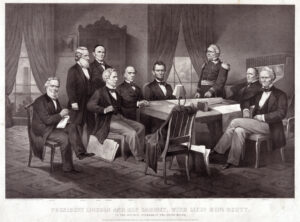 than saving the crumbling union. In an August 1862 letter to New York Tribune editor Horace Greeley, Lincoln confessed that, “My paramount object in this struggle is to save the Union, and it is not either to save or to destroy slavery.” I never knew that, somehow. Lincoln was highly patriotic, and his objective was that of hoping that a strong statement declaring a national policy of emancipation would stimulate a rush of the South’s enslaved people into the ranks of the Union Army. He hoped that such a rush of manpower would resupply the Union forces, while depleting the Confederacy’s labor force, on which it depended to wage war against the North. Lincoln was against slavery, but he was for America more. That seems like a strange compromise, but I assume he thought freeing the slaves was a fight for another day. That decision would eventually get him killed.
than saving the crumbling union. In an August 1862 letter to New York Tribune editor Horace Greeley, Lincoln confessed that, “My paramount object in this struggle is to save the Union, and it is not either to save or to destroy slavery.” I never knew that, somehow. Lincoln was highly patriotic, and his objective was that of hoping that a strong statement declaring a national policy of emancipation would stimulate a rush of the South’s enslaved people into the ranks of the Union Army. He hoped that such a rush of manpower would resupply the Union forces, while depleting the Confederacy’s labor force, on which it depended to wage war against the North. Lincoln was against slavery, but he was for America more. That seems like a strange compromise, but I assume he thought freeing the slaves was a fight for another day. That decision would eventually get him killed.
Lincoln waited to unveil the proclamation until he could do so on the heels of a successful Union military 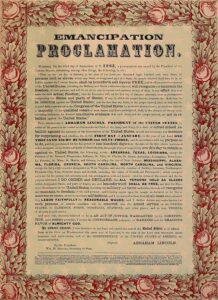 advance, just as he had promised. After a victory at Antietam, Lincoln publicly announced a preliminary Emancipation Proclamation on September 22, 1862, declaring all enslaved people free in the rebellious states as of January 1, 1863. Lincoln and his advisors limited the proclamation’s language to slavery in states outside of federal control as of 1862, which might seem odd, but if the war was lost by the Union, it wouldn’t have mattered anyway, and he needed the support of the North. Not all of the people in the north were in total agreement with the freeing of the slaves, although the vast majority were. The proclamation did not address the contentious issue of slavery within the nation’s border states. In his attempt to appease all parties, Lincoln left many loopholes open that civil rights advocates would be forced to tackle in the future. I have learned, in reference to politics, that many a politician has been forced to practice a little “appeasing” in order to get anything accomplished. I can’t say that is a good thing, but rather that it is sometimes a necessary thing.
advance, just as he had promised. After a victory at Antietam, Lincoln publicly announced a preliminary Emancipation Proclamation on September 22, 1862, declaring all enslaved people free in the rebellious states as of January 1, 1863. Lincoln and his advisors limited the proclamation’s language to slavery in states outside of federal control as of 1862, which might seem odd, but if the war was lost by the Union, it wouldn’t have mattered anyway, and he needed the support of the North. Not all of the people in the north were in total agreement with the freeing of the slaves, although the vast majority were. The proclamation did not address the contentious issue of slavery within the nation’s border states. In his attempt to appease all parties, Lincoln left many loopholes open that civil rights advocates would be forced to tackle in the future. I have learned, in reference to politics, that many a politician has been forced to practice a little “appeasing” in order to get anything accomplished. I can’t say that is a good thing, but rather that it is sometimes a necessary thing.

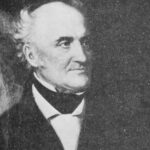 It seems entirely fitting that the first ship in the first navy of the new country, be called after that country. Hense the USS United States was launched on May 10, 1797. USS United States was a wooden-hulled, three-masted heavy frigate of the United States Navy. It was the first of the six original frigates authorized for construction by the Naval Act of 1794. As they were preparing to build the ship, they asked that names be submitted for consideration, and the name “United States” was among the ten such names submitted to President George Washington by Secretary of War Timothy Pickering in March of 1795 for the frigates that were to be constructed. The frigates were designed by Joshua Humphreys to be the young Navy’s capital ships. They would need to be an example of greatness, and so USS United States and her sisters were larger and more heavily armed and built stronger than standard frigates of the period. USS United States ordered on March 27, 1794, built at Humphrey’s shipyard in Philadelphia, Pennsylvania, and launched on May 10, 1797. The USS United States immediately began duties with the newly formed United States Navy protecting American merchant shipping during the Quasi-War with France.
It seems entirely fitting that the first ship in the first navy of the new country, be called after that country. Hense the USS United States was launched on May 10, 1797. USS United States was a wooden-hulled, three-masted heavy frigate of the United States Navy. It was the first of the six original frigates authorized for construction by the Naval Act of 1794. As they were preparing to build the ship, they asked that names be submitted for consideration, and the name “United States” was among the ten such names submitted to President George Washington by Secretary of War Timothy Pickering in March of 1795 for the frigates that were to be constructed. The frigates were designed by Joshua Humphreys to be the young Navy’s capital ships. They would need to be an example of greatness, and so USS United States and her sisters were larger and more heavily armed and built stronger than standard frigates of the period. USS United States ordered on March 27, 1794, built at Humphrey’s shipyard in Philadelphia, Pennsylvania, and launched on May 10, 1797. The USS United States immediately began duties with the newly formed United States Navy protecting American merchant shipping during the Quasi-War with France.
“Joshua Humphreys’ design was deep, long on keel and narrow of beam (width) for mounting very heavy guns. The design incorporated a diagonal scantling (rib) scheme to limit hogging while giving the ships extremely heavy planking. This gave the hull greater strength than those of more lightly built frigates. Humphreys developed his design after realizing that the fledgling United States could not match the navy sizes of the European states. He therefore designed his frigates to be able to overpower other frigates, but with the speed to escape from a ship of the line.”
Of course, as with any naval ship, there is always the possibility of capture, sinking, or destruction. In 1861, 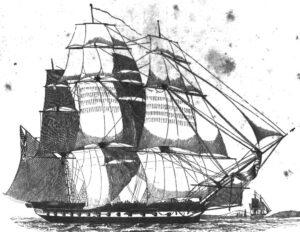 while the USS United States was in port at Norfolk, the Virginia Navy of the Confederacy managed to seize the ship. It was really one of the most hideous acts, if you ask me, for a ship named after this great United States to be stolen by the very group who was trying to tear this nation apart, is a heinous crime. Upon her capture, USS United States was subsequently commissioned into the Confederate navy as CSS United States…which is in itself a contradiction of terms. She was later scuttled by the Confederate forces. After retaking Norfolk, Virginia, the US Navy raised USS United States, but the aged and damaged ship was not able to be returned to service. USS United States was instead held at the Norfolk Navy Yard until she was broken up in December 1865. It was such sad ending for a great ship.
while the USS United States was in port at Norfolk, the Virginia Navy of the Confederacy managed to seize the ship. It was really one of the most hideous acts, if you ask me, for a ship named after this great United States to be stolen by the very group who was trying to tear this nation apart, is a heinous crime. Upon her capture, USS United States was subsequently commissioned into the Confederate navy as CSS United States…which is in itself a contradiction of terms. She was later scuttled by the Confederate forces. After retaking Norfolk, Virginia, the US Navy raised USS United States, but the aged and damaged ship was not able to be returned to service. USS United States was instead held at the Norfolk Navy Yard until she was broken up in December 1865. It was such sad ending for a great ship.
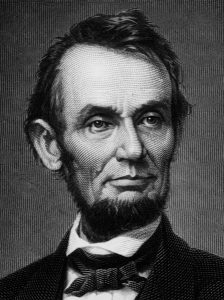
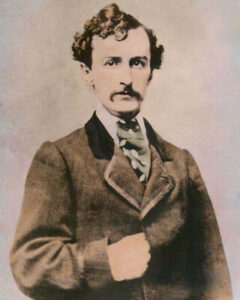 John Wilkes Booth was an actor, and as such, he had an expectation of applause following a performance. That is just what he thought the assassination of President Lincoln was. No, he didn’t think it was fake. He knew he was murdering the President of the United States, but he somehow thought people would consider it one of his greatest performances…the crowning moment of his stage career. It never occurred to him that the people who had loved him as an actor would suddenly turn against him.
John Wilkes Booth was an actor, and as such, he had an expectation of applause following a performance. That is just what he thought the assassination of President Lincoln was. No, he didn’t think it was fake. He knew he was murdering the President of the United States, but he somehow thought people would consider it one of his greatest performances…the crowning moment of his stage career. It never occurred to him that the people who had loved him as an actor would suddenly turn against him.
At the very least, he expected to be greeted with applause and support by those sympathetic to the Confederacy. Instead, he found, much to his shock and great dismay, that he was a hounded man, and few wanted to associate with him. Oh, the loyalists to the Confederacy did their duty by him, but with great reluctance. He first encountered this reaction when he and David Herold, who was an American pharmacist’s assistant and Wilkes accomplice in the assassination of Abraham Lincoln, stumbled upon a man in the dark, while searching for the home of Colonel Cox. The man, a local named Oswell Swann, reluctantly agreed to guide then to the Cox home, but only if he received payment for his services. He considered it just reward for the risk he was taking. Afterward, Swann collected his fee and vanished into the night, leaving the fugitives to the “hospitality” of Colonel Cox. That “hospitality” consisted of a few supplies, including whiskey, and a servant to lead the men to a hiding place in the woods. Cox certainly didn’t want these men to be found in his house.
Cox informed Booth that he was to “remain hidden in the woods until contacted.” Then Cox sent for Thomas Jones, a Confederate agent with experience in smuggling spies and information across the Potomac River into Virginia. Jones agreed to get them out and guide them across the Potomac, for a fee, but when he visited the fugitives in the woods, where they hid in a pine thicket, he told them it would be several days before he could do so. The manhunt for Booth and Herold was massive. Federal troops combed the area, searching properties and interrogating citizens over whether they had seen two men traveling together. Booth was very distressed, because instead of receiving the expected support and appreciation of the south, Booth found himself confined to a pine thicket!! Jones provided the men with newspapers, from which Booth discovered that he was widely considered a villainous murderer, rather than the Confederate hero he had expected to be. He wrote about his “horrible” fate, and the “injustice” of it all, in a diary he kept in an appointment book.
Federal authorities had most of the conspirators who had planned to kidnap Abraham Lincoln in custody by April 20, 1865. Several were not party to the assassination, but because they were involved in the kidnapping plans, they were held anyway. Three men were still not in custody…Booth, Herold, and John Surratt remained at large. The War Department put out wanted poster, released in Washington on April 20, offering a $50,000 reward for Booth, and $25,000 apiece for Herold and Surratt. By then, Surratt was hiding out in Canada, even though he knew that his mother was being held in federal custody. Coward that he was, Surratt was making plans to flee to Europe. Booth and Herold continued to cower in a pine thicket, relatively helpless. They didn’t dare leave, because they would be seen and immediately arrested. A dejected Booth spent his time drinking whiskey and scribbling in his makeshift diary over the unfairness of his reception. He believed his action had made him a martyr to the Confederate cause.
When the fugitives finally attempted to cross the Potomac, on about April 21, Jones’s guidance consisted of verbal instructions directing them to a waiting boat. These men had no boating experience, and the night was windy. The tides and swift current didn’t help matters either. Nor did the gunboats in the area. Booth whined into his diary, “last night being chased by gunboats till I was forced to return wet, cold, and starving.” Needless to say, the crossing was a failure, but Booth’s overly dramatic entry exaggerated what may have been an encounter with USS Juniper, positioned in the river near their point of crossing. Juniper’s log did not include a report of chasing anything that night. Booth likely spotted the gunboat, and in a panic, returned to the Maryland shore. Booth’s fugitive days ended when he was caught on April 26, 1865, near Port Royal, Virginia. As Booth and his co-conspirator, David Herold, cowered inside a barn, the soldiers demanded that they surrender. John Wilkes Booth died in agonizing fashion at the hands of Union soldiers in Port Royal, Virginia, 
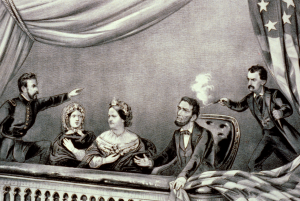 two weeks after he assassinated Abraham Lincoln. When the Union soldiers demanded their surrender, Herold complied. But Booth refused. He didn’t leave the barn until one of the soldiers set it on fire. As he tried to sneak out in the shadows and flame, a shot cracked through the silent night…and found its mark. Booth briefly held on to life, but in the end, the bullet would be his demise…in true disgraced style.
two weeks after he assassinated Abraham Lincoln. When the Union soldiers demanded their surrender, Herold complied. But Booth refused. He didn’t leave the barn until one of the soldiers set it on fire. As he tried to sneak out in the shadows and flame, a shot cracked through the silent night…and found its mark. Booth briefly held on to life, but in the end, the bullet would be his demise…in true disgraced style.
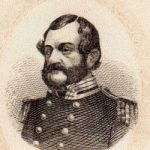 Captain George Hollins joined the United States Navy when he was just 15 years old, and served during the War of 1812. His was a long and distinguished career, but when the Civil War broke out in 1861, he chose to resign his commission, and offer his services to the Confederacy. After a brief stop in his hometown, Baltimore, Hollins offered his services to the Confederacy and received a commission on June 21, 1861. I suppose that every man had to choose a side in the Civil War, and I’m sure he considered his reasons for choosing the Confederacy to be valid, but many of us would consider his actions to be almost traitorous, were it not for the fact that both sides were the United States…just not so united.
Captain George Hollins joined the United States Navy when he was just 15 years old, and served during the War of 1812. His was a long and distinguished career, but when the Civil War broke out in 1861, he chose to resign his commission, and offer his services to the Confederacy. After a brief stop in his hometown, Baltimore, Hollins offered his services to the Confederacy and received a commission on June 21, 1861. I suppose that every man had to choose a side in the Civil War, and I’m sure he considered his reasons for choosing the Confederacy to be valid, but many of us would consider his actions to be almost traitorous, were it not for the fact that both sides were the United States…just not so united.
Hollins devised a plan to capture a commercial vessel that was bringing supplies to the Union Army. Then they planned to use that ship to lure other Union ships into Confederate service. Soon after, Hollins met up with Richard Thomas Zarvona, a fellow Marylander and former student at West Point. Zarvona  was an adventurer who had fought with pirates in China and revolutionaries in Italy. He seemed the perfect co-conspirator for this project. They devised a plan to capture the Saint Nicholas. Then it would be the decoy they used to force other Yankee ships into Confederate service. Zarvona went to Baltimore,where he recruited a band of pirates, who boarded the Saint Nicholas as paying passengers on June 28, 1862. Using the name Madame La Force, Zarvona disguised himself as a flirtatious French woman. Hollins boarded the Saint Nicholas at its first stop.
was an adventurer who had fought with pirates in China and revolutionaries in Italy. He seemed the perfect co-conspirator for this project. They devised a plan to capture the Saint Nicholas. Then it would be the decoy they used to force other Yankee ships into Confederate service. Zarvona went to Baltimore,where he recruited a band of pirates, who boarded the Saint Nicholas as paying passengers on June 28, 1862. Using the name Madame La Force, Zarvona disguised himself as a flirtatious French woman. Hollins boarded the Saint Nicholas at its first stop.
A while later the band of co-conspirators went to the “French woman’s” cabin. Inside, they armed themselves and came back out on the deck to surprise the crew. After 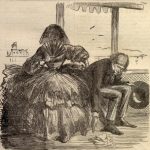 capturing the crew, Hollins took control of the ship. At this point, the purpose of their mission began. They had planned to capture a Union gunboat, the Pawnee, but it was called away. Instead, the Saint Nicholas and its pirate crew came upon a ship loaded with Brazilian coffee, and two more ships, carrying loads of ice and coal. Both ships quickly fell to the Saint Nicholas. For his actions, Hollins received a promotion to commodore and was sent to New Orleans to command the naval forces there at the end of July. On July 8, he would try another daring mission, to capture the Columbia, a sister ship of the Saint Nicholas, but the captain of the Saint Nicholas was on board the Columbia, on his way home after being released by the Confederate authorities. He recognized the men and they were arrested. It was the end of his tirade.
capturing the crew, Hollins took control of the ship. At this point, the purpose of their mission began. They had planned to capture a Union gunboat, the Pawnee, but it was called away. Instead, the Saint Nicholas and its pirate crew came upon a ship loaded with Brazilian coffee, and two more ships, carrying loads of ice and coal. Both ships quickly fell to the Saint Nicholas. For his actions, Hollins received a promotion to commodore and was sent to New Orleans to command the naval forces there at the end of July. On July 8, he would try another daring mission, to capture the Columbia, a sister ship of the Saint Nicholas, but the captain of the Saint Nicholas was on board the Columbia, on his way home after being released by the Confederate authorities. He recognized the men and they were arrested. It was the end of his tirade.
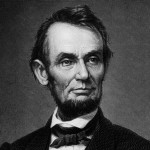 In the early years of politics in the United States, the political parties had different names than they do these days. Of course, with the additional parties we have now, it is an ever changing political scene, with the lesser parties visible, but unlikely to win the office of President of the United States…at least for now. The First Party System of the United States featured the Federalist Party and the Democratic-Republican Party (also called “Democratic-Republican” or “Jeffersonian Republican”), these were in place from 1792 to 1824. The Whig Party, led by Henry Clay, that grew from the National Republican Party, and the Democratic Party, led by Andrew Jackson, were in play from 1828 to 1854. The Third Party System stretched from 1854 to the mid-1890s, and was characterized by the emergence of the anti-slavery Republican Party (nicknamed “GOP”), which adopted many of the economic policies of the Whigs, such as national banks, railroads, high tariffs, homesteads and aid to land grant colleges. It was into this time-frame that President Abraham Lincoln entered office.
In the early years of politics in the United States, the political parties had different names than they do these days. Of course, with the additional parties we have now, it is an ever changing political scene, with the lesser parties visible, but unlikely to win the office of President of the United States…at least for now. The First Party System of the United States featured the Federalist Party and the Democratic-Republican Party (also called “Democratic-Republican” or “Jeffersonian Republican”), these were in place from 1792 to 1824. The Whig Party, led by Henry Clay, that grew from the National Republican Party, and the Democratic Party, led by Andrew Jackson, were in play from 1828 to 1854. The Third Party System stretched from 1854 to the mid-1890s, and was characterized by the emergence of the anti-slavery Republican Party (nicknamed “GOP”), which adopted many of the economic policies of the Whigs, such as national banks, railroads, high tariffs, homesteads and aid to land grant colleges. It was into this time-frame that President Abraham Lincoln entered office.
Abraham Lincoln was elected the 16th president of the United States over a deeply divided Democratic Party, becoming the first Republican to win the presidency. Lincoln received only 40 percent of the popular vote but handily defeated the three other candidates…Southern Democrat John Breckinridge, Constitutional Union candidate John Bell, and Northern Democrat Stephen Douglas, a United States senator from Illinois. Lincoln, a Kentucky-born lawyer and former Whig representative to Congress, first gained national stature during his 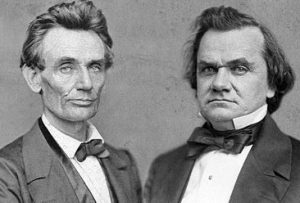 campaign against Stephen Douglas of Illinois for a United States Senate seat in 1858. The senatorial campaign featured a remarkable series of public encounters on the slavery issue, known as the Lincoln-Douglas debates, in which Lincoln argued against the spread of slavery, while Douglas maintained that each territory should have the right to decide whether it would become free or slave. Lincoln lost the Senate race, but his campaign brought national attention to the young Republican Party. In 1860, Lincoln won the party’s presidential nomination.
campaign against Stephen Douglas of Illinois for a United States Senate seat in 1858. The senatorial campaign featured a remarkable series of public encounters on the slavery issue, known as the Lincoln-Douglas debates, in which Lincoln argued against the spread of slavery, while Douglas maintained that each territory should have the right to decide whether it would become free or slave. Lincoln lost the Senate race, but his campaign brought national attention to the young Republican Party. In 1860, Lincoln won the party’s presidential nomination.
I find it very odd that today’s Democrats try to take credit for racial equality, when history proves that the opposite was true. When we look at the wars and the votes by the party numbers, it is easy to see that the Democratic party has long been the one trying to keep racial injustice going in this country. In fact, it was Lincoln’s anti-slavery views that caused the secession of seven southern states in protest, because they wanted to keep their slaves. Now, many people are wanting to tear down the statues that were erected to the heroes of the south…all Democrats, and it is the Democratic Party that is leading the fight. In my opinion, it is like tearing yourself apart from the inside. The Democratic Party, in an effort to appear to be the ones trying to obtain equal rights for all races, is, on the outside anyway trying to appear to agree, while on the inside, they are just trying to take eyes off of their own underhanded agenda. I don’t know how I feel about the removal of those statues, but I don’t like that the Republicans and Conservatives are being blamed for the initial placement of the statues.

In 1863, as the tide turned against the Confederacy, Lincoln emancipated the slaves and in 1864 won reelection. In April 1865, he was assassinated by Confederate sympathizer John Wilkes Booth at Ford’s Theatre in Washington DC. The attack came only five days after the American Civil War effectively ended with the surrender of Confederate General Robert E. Lee at Appomattox. For preserving the Union and bringing an end to slavery, and for his unique character and powerful oratory, Lincoln is hailed as one of the greatest American presidents. And amazingly…at least to the Democrats, he was a Republican.

